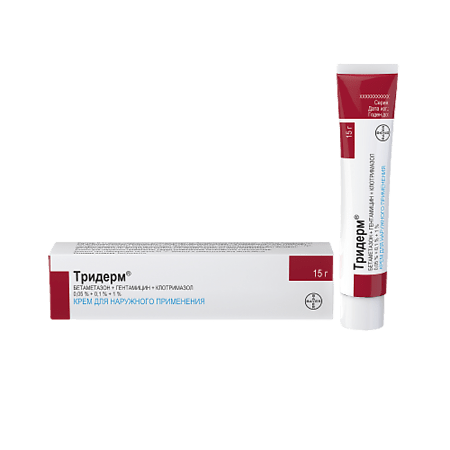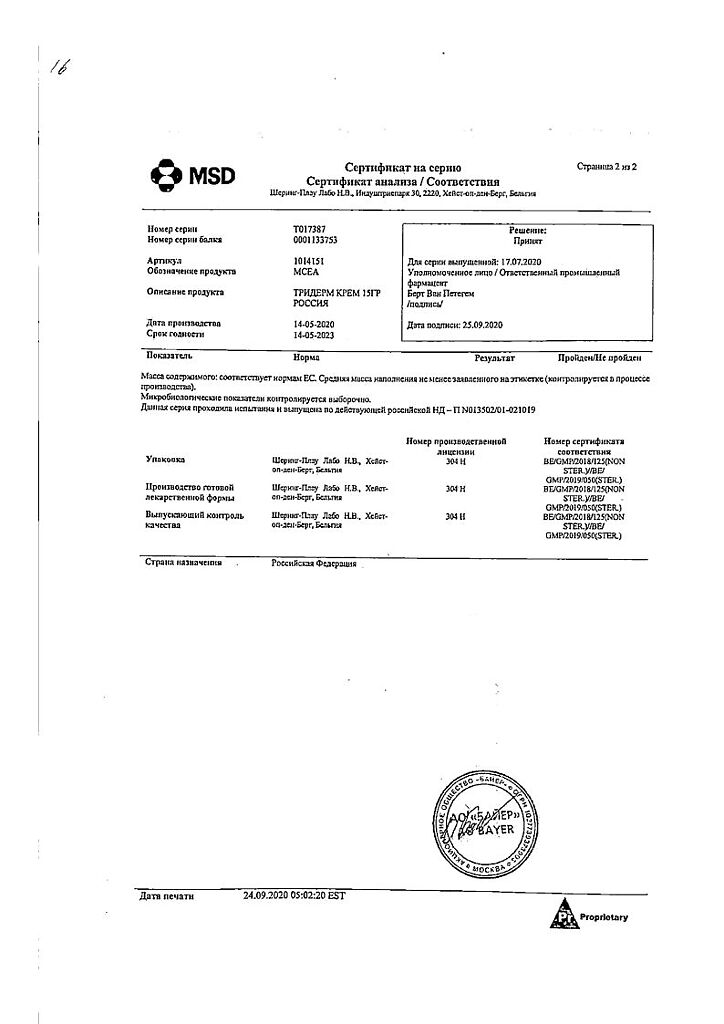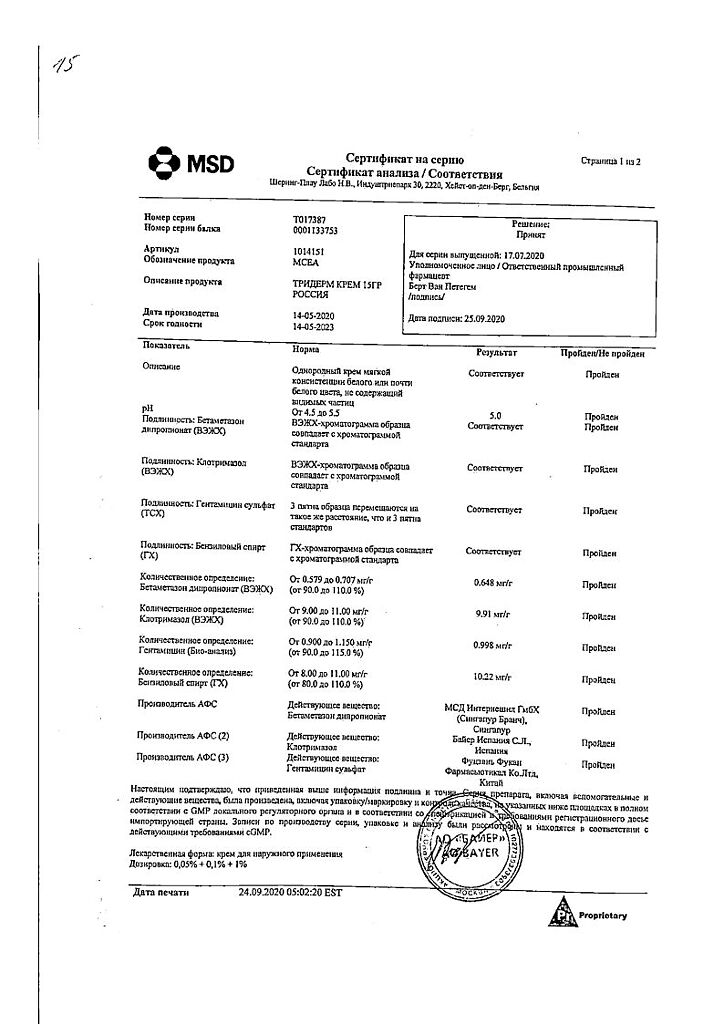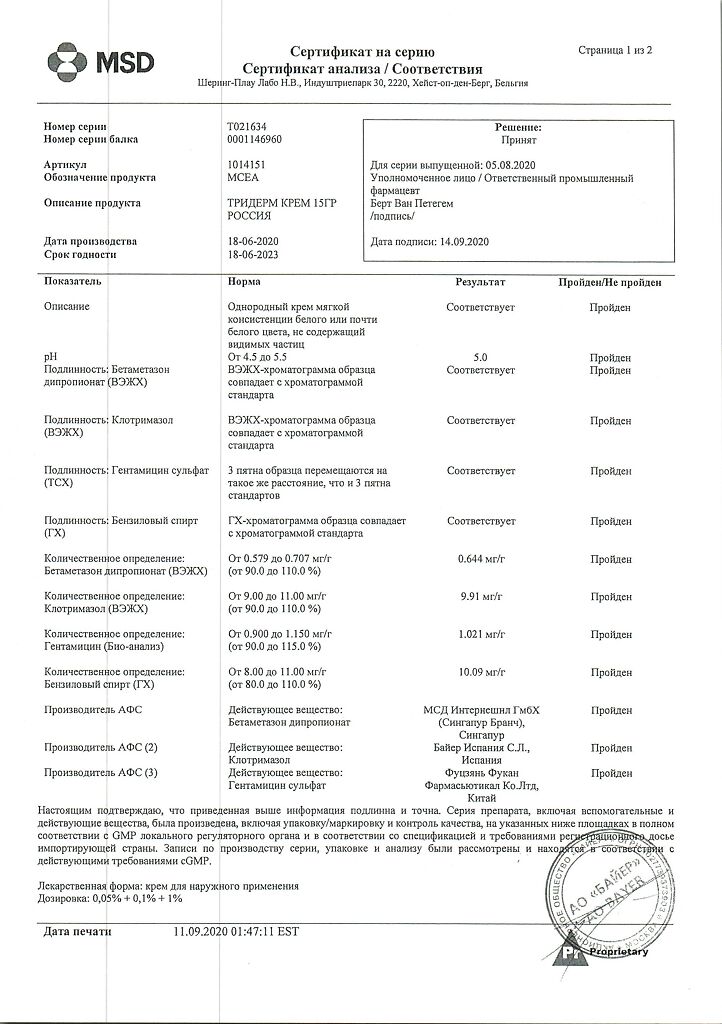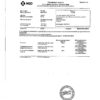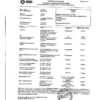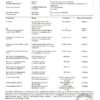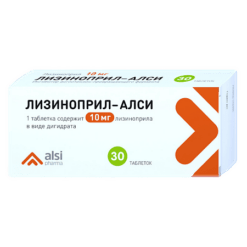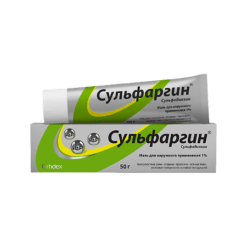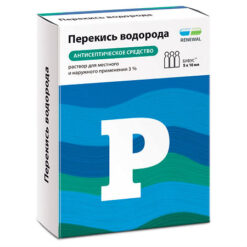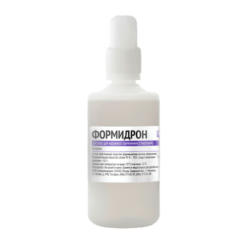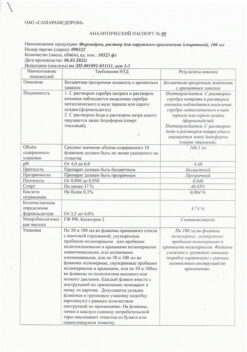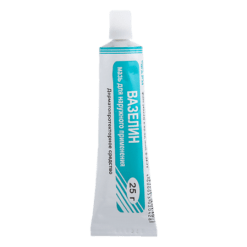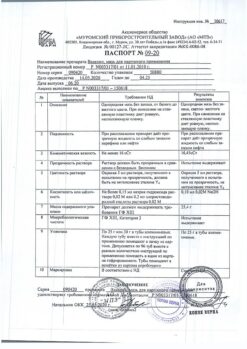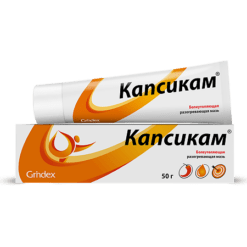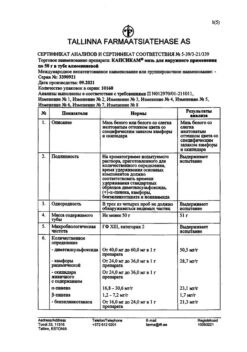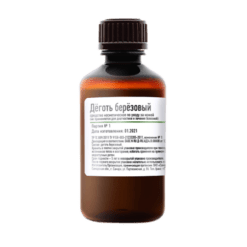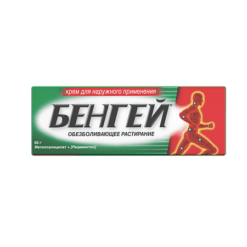No products in the cart.
Triderm, cream 15 g
€29.45 €27.37
Description
Pharmacological group:
Glucocorticosteroid+antibiotic-aminoglycoside+antifungal agent.
Pharmacological action:
Triderm is a combination drug,.
The Triderm® ointment and cream combines the anti-inflammatory, anti-pruritic, anti-allergic and anti-exudative effects of betamethasone dipropionate with the antifungal activity of clotrimazole and the broad antibacterial action of gentamicin sulfate.
Clotrimazole has antifungal action (inhibits the synthesis of the cell membrane ergosterol of fungi). It is active against Trichophyton rubrum, Trichophyton mentagrophytes, Epidermophyton floccosum, Microsporum canis, Candida albicans, Malassezia furfur (Pityrosporum orbiculare).
Gentamicin sulfate, a broad-spectrum antibiotic of the aminoglycoside group, acts bactericidally and provides highly effective local treatment of primary and secondary bacterial skin infections. It is active against Gram-negative microorganisms: Pseudomonas aeruginosa, Aerobacter aerogenes, Escherichia coli, Proteus vulgaris, Klebsiella pneumoniae; Gram-positive microorganisms: Streptococcus spp. (sensitive strains of alpha- and beta-hemolytic Streptococcus group A), Staphylococcus aureus (coagulase-positive, coagulase-negative and some strains producing penicillinase).
Indications
Indications
Dermatoses complicated by infections caused by pathogens sensitive to the drug, or if such infections are suspected, including simple and allergic dermatitis, atopic dermatitis (including diffuse neurodermatitis), limited neurodermatitis, eczema, dermatomycosis (dermatophytosis, candidiasis, lichen versicolor), especially when localized in the groin area and large folds of the skin, simple chronic lichen (limited neurodermatitis).
Pharmacological effect
Pharmacological effect
Pharmacotherapeutic group:
Anti-inflammatory, antibacterial, antifungal agent
Pharmacological action:
Combined preparation for external use. Triderm® cream combines the anti-inflammatory, antipruritic, antiallergic and antiexudative effect of betamethasone dipropionate with the antifungal activity of clotrimazole and the broad antibacterial effect of gentamicin sulfate.
Clotrimazole has an antifungal effect by disrupting the synthesis of ergosterol, which is an integral part of the cell membrane of fungi. Active against Trichophyton rubrum, Trichophyton mentagrophytes, Epidermophyton floccosum, Microsporum canis, Candida albicans, Pityrosporum orbiculare (Malassezia furtur).
Gentamicin is a broad-spectrum antibiotic from the aminoglycoside group. It acts bactericidal and provides highly effective local treatment of primary and secondary bacterial skin infections. Active against gram-negative bacteria: Pseudomonas aeruginosa, Aerobacter aerogenes, Escherichia coli, Proteus vulgaris and Klebsiella pneumoniae; gram-positive bacteria: Staphylococcus aureus (coagulase-positive, coagulase-negative and some penicillinase-producing strains).
Special instructions
Special instructions
Triderm® cream is not intended for use in ophthalmology. Patients using systemic glucocorticosteroids or topical glucocorticosteroids have reported visual disturbances. If the patient experiences blurred vision or other visual disturbances, an ophthalmologist should be consulted to evaluate possible causes, which may include cataracts, glaucoma, and serous chorioretinopathy.
Prolonged external use of antibiotics can sometimes lead to the growth of resistant microflora. In this case, as well as if irritation, sensitization or superinfection develops when using the drug Triderm®, treatment should be stopped and appropriate therapy should be prescribed. Cross-allergic reactions with aminoglycoside antibiotics have been observed. Any side effects that occur with the use of systemic glucocorticosteroids, including suppression of adrenal function, may also occur when using glucocorticosteroids for external use, especially in children.
Systemic absorption of glucocorticosteroids or gentamicin when applied topically will be higher if treatment is carried out over large areas of skin or when using occlusive dressings, especially during long-term treatment or when the integrity of the skin is compromised. Avoid applying gentamicin to open wounds and damaged skin. Otherwise, side effects characteristic of gentamicin when used systemically may occur. Appropriate precautions should be taken in such cases, especially when treating children.
With long-term use of the drug, it is recommended to discontinue it gradually.
Active ingredient
Active ingredient
Betamethasone, Gentamicin, Clotrimazole
Composition
Composition
1 g of cream contains
active ingredients: micronized betamethasone dipropionate 0.643 mg (equivalent to 0.5 mg betamethasone), micronized clotrimazole 10,000 mg, gentamicin sulfate 1,690 * mg equivalent to 1,000 mg (1000 IU) gentamicin base;
excipients: white soft paraffin 150,000 mg, propylene glycol 100,000 mg, cetostearyl alcohol 72,000 mg, liquid paraffin 60,000 mg, macrogol cetostearyl ether 22,500 mg, benzyl alcohol 10,000 mg, sodium dihydrogen phosphate dihydrate 2,995 mg, phosphoric concentrated acid 0.030 mg, phosphoric acid** or sodium hydroxide** q.s., purified water q.s.
Pregnancy
Pregnancy
The use of Triderm® during pregnancy is possible only if the expected benefit to the mother outweighs the potential risk to the fetus.
Pregnant women should not use the drug on large areas of skin or for a long period of time. It is not known whether the components of the drug are excreted in breast milk. Therefore, when prescribing Triderm® during lactation, the issue of stopping breastfeeding should be decided.
Contraindications
Contraindications
Hypersensitivity to any of the components of the drug, skin tuberculosis, skin manifestations of syphilis, chicken pox, herpes simplex, skin post-vaccination reactions, childhood (less than 2 years).
With caution:
Pregnancy (especially in the first trimester), childhood (> 2 years), long-term treatment, use on large areas of skin or when the integrity of the skin is damaged, use of occlusive dressings (especially in children).
Side Effects
Side Effects
Very rarely, when using the drug Triderm®, the following are observed: burning sensation, erythema, exudation, pigmentation disorders and itching.
Adverse reactions encountered when using glucocorticosteroids for external use (especially when using occlusive dressings): burning sensation, itching, dry skin, folliculitis, hypertrichosis, acne, hypopigmentation, perioral dermatitis, allergic contact dermatitis, skin maceration, development of secondary infection, skin atrophy, stretch marks, miliaria, as well as systemic reactions (blurred vision).
Adverse reactions caused by clotrimazole: erythema, tingling sensation, blistering, peeling, local swelling, itching, urticaria, skin irritation.
Adverse reactions caused by gentamicin: transient skin irritation (erythema, itching), usually not requiring discontinuation of treatment.
Interaction
Interaction
No interaction of the drug Triderm cream with other drugs has been registered.
Overdose
Overdose
Symptoms: with long-term use of local corticosteroids in high doses, suppression of adrenal function with the development of secondary adrenal insufficiency and symptoms of hypercortisolism, including Cushing’s syndrome, is possible.
An overdose of clotrimazole when applied topically does not lead to the appearance of any symptoms.
With a single overdose of gentamicin, the appearance of any symptoms is also not expected.
Long-term treatment with gentamicin in high doses may lead to the growth of insensitive flora.
Treatment: symptomatic. Acute symptoms of hypercortisolism are usually reversible. If necessary, electrolyte imbalance is corrected. In case of chronic GCS toxicity, gradual withdrawal of GCS is recommended.
Storage conditions
Storage conditions
Store at temperatures from +2 °C to +30 °C.
Shelf life
Shelf life
3 years. Do not use after expiration date.
Manufacturer
Manufacturer
Famar A.V.E., Greece
Additional information
| Shelf life | 3 years. |
|---|---|
| Conditions of storage | Store at a temperature of +2 ° C to +30 ° C. |
| Manufacturer | Bayer Bitterfeld GmbH, Germany |
| Medication form | exterior cream |
| Brand | Bayer Bitterfeld GmbH |
Other forms…
Related products
Buy Triderm, cream 15 g with delivery to USA, UK, Europe and over 120 other countries.

